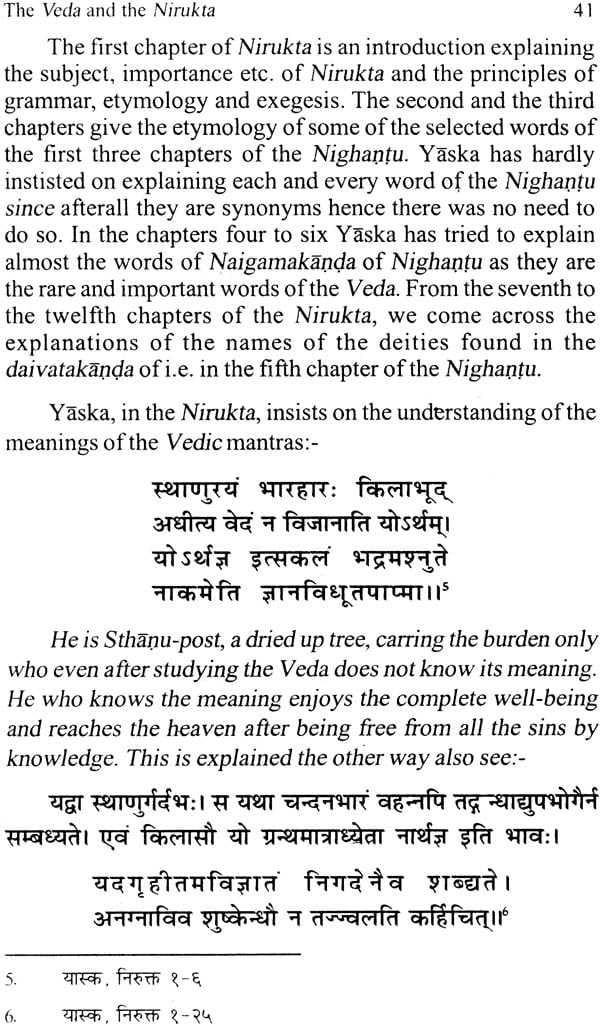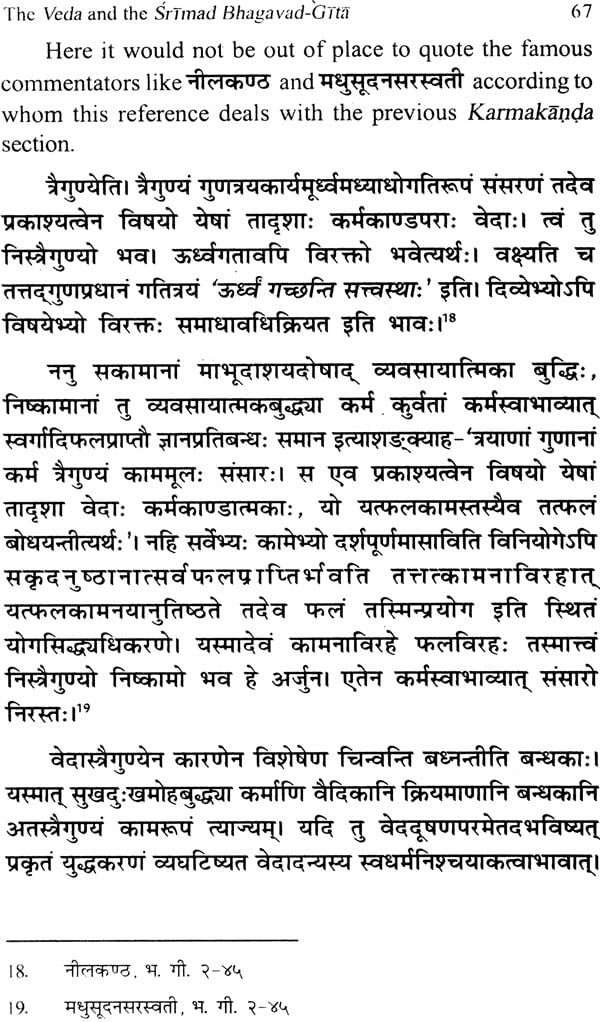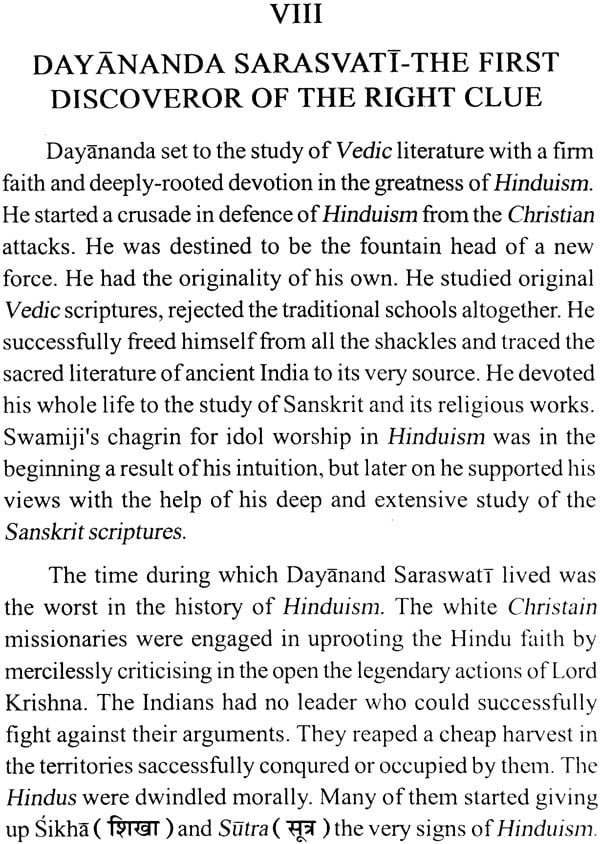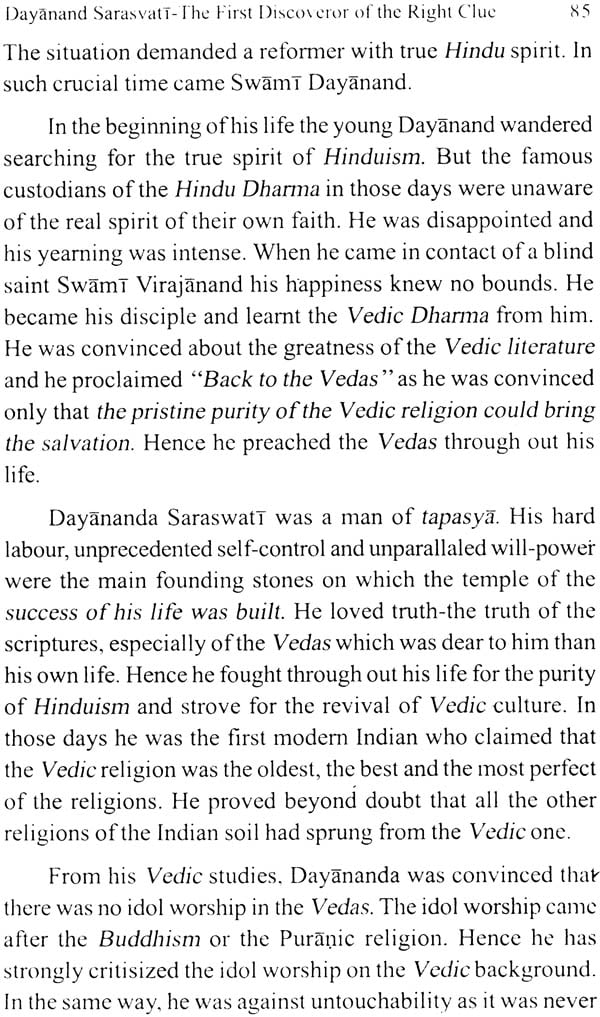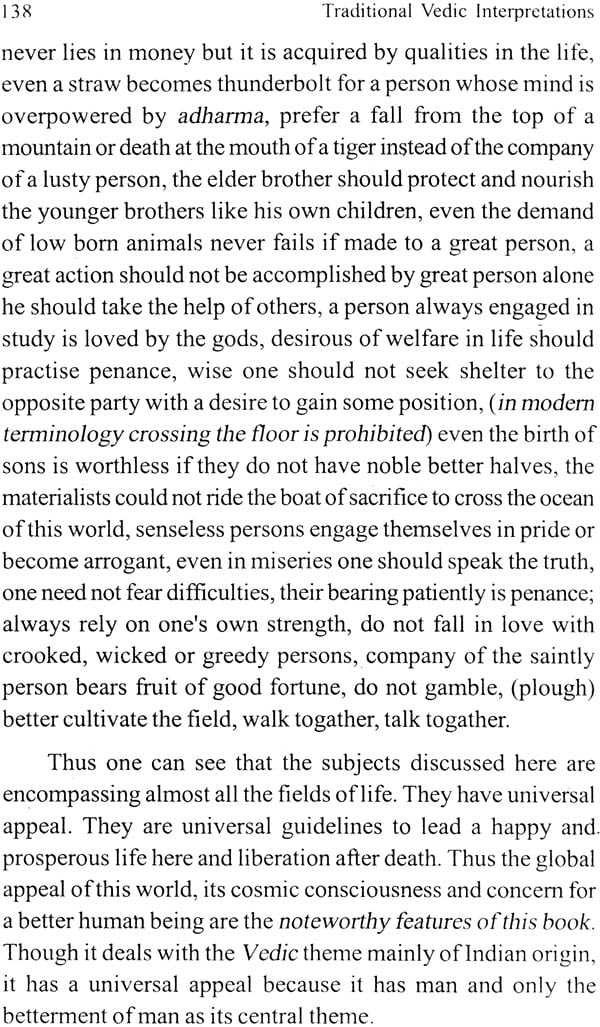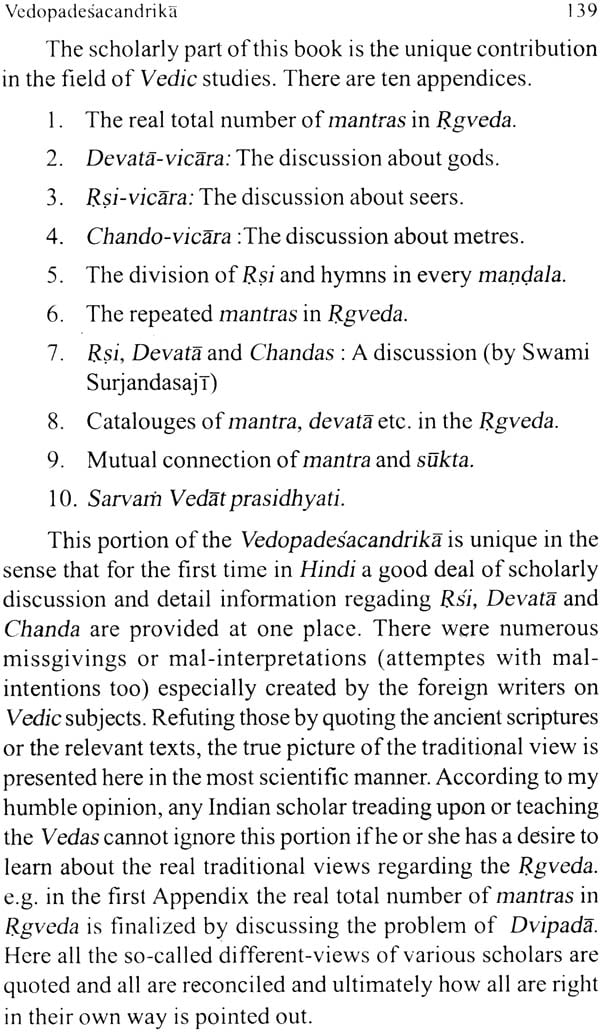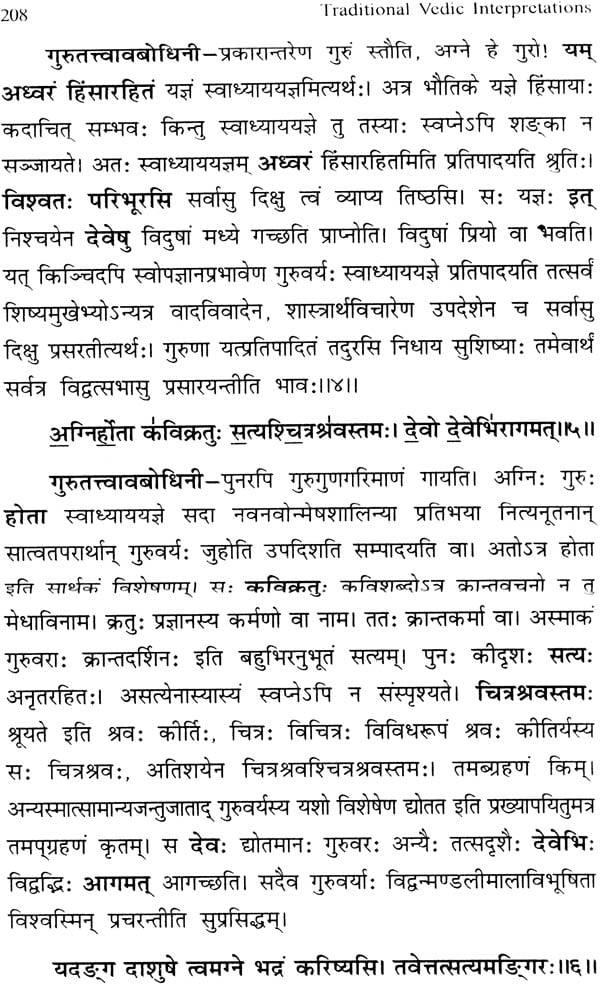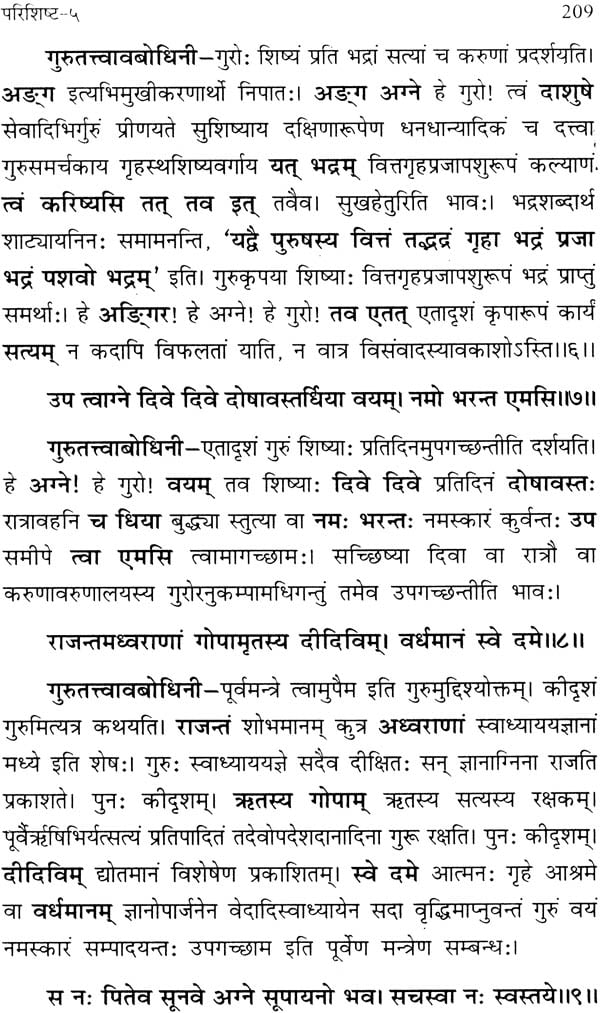
Traditional Vedic Interpretations
Book Specification
| Item Code: | NAK716 |
| Author: | Gautam Patel |
| Publisher: | Rashtriya Sanskrit Sansthan, Janakpuri |
| Language: | English and Sanskrit |
| Edition: | 1999 |
| Pages: | 223 (8 B/W Illustration) |
| Cover: | Hardcover |
| Other Details | 8.5 inch X 5.5 inch |
| Weight | 420 gm |
Book Description
Vedas are the chief source of Indian religion and culture. The roots of History, Geography, Philosophy, Ethics, Mythology, Musicology, Ayurveda, Biology, Botony, Social Sciences or Technical Sciences in India are traceable in the Vedic literature. They have attracted a host of scholars from Western countries and various theories regarding its subject matter have been put forth.
Here an attempt is made to put forth Indian Traditional views or theories of the worthy Indian texts like Upanised or Gita, Ancient Acharyas or modern Indian scholars about the Vedas. What Upanisads, Nirukta, Gita, in ancient days or Swami Dayanand, Sri. Aurobindo, Swami .Gangesh- waranandj, Prof. Vasudeva Sharan Agrawal say about Vedas are briefly discussed in this book. Its appendices are interesting where only one Vedic mantra is interpreted by various Indian scholars in different ways is collected in their own words.
This work would definitely prove useful and interesting to the students of Vedic literature in general and to those of the lovers of traditional Vedic interpretations in particular.
Dr. Gautam Patel born on 4th August, 1936, at Ahmedabad, Gujarat. Obtained the M.A. and PhD. degrees in Sanskrit from Gujarat University. He rendered service in the Sanskrit department of St. Xavier's College, Ahmedabad.
Attended 12 international and 60 national conferences. He has established Sanskrit Seva Samiti in1981, and through this samiti published 60 low cost books and organised 12 national seminars. He has 85 books at his credit and has published more than' 60 research paper and 200 articles in different reputed journals.
He was awarded Veda-Ratna by Swami Gangeshwaranand Trust, Mumbai and Sanskrit Seva-Retna by Shankaracharya of Dwarika-peetha.
Presently he is the Chairman of Gujarat State Sanskrit Sahitya Akademi. He is the elected Vice-President for the 40th Session of All India Oriental Conference to be held at Chennai in 2000. A.D.
Recently he is appointed as the Chairman of the state level committee for the formation of Sanskrit University in the State.
I have great pleasure to present this volume of Golden Jubilee of India's Independence Series of Rashtriya Sanskrit Sans than to our esteemed readers. The Volume varily represents the goodwill and cooperation, the Sansthan has all along been receiving from the distinguished scholars all over the country.
The Sansthan was established in October, 1970 as an autonomous apex body under the Ministry of Human Resource Development, Govt. of India with a view to promoting, preserving and propagating Sanskrit learning in all its aspects, with special reference to the in depth shastraic learning. Apart from conducting the regular courses of studies at the various constituents Vidyapeethas, it has been bringing out invaluable publications representing dissemination of knowledge contained in the Shastras.
Thanks to the continued help, encouragement and support from the Ministry of Human Resource Development, Govt. of India that the Sensthan has grown by leaps and bounds and has been able to render its services to promotion of Sanskrit learning at national and international levels. The Sansthan has decided to bring out 50 scholarly monographs by eminent Sanskrit scholars of different fields as part of the academic programmes organised to celebrate the Golden Jublee of India’s Independence.
The present book Traditional vedic Interpretations critically analyses the different methodology of interpretations for proper understanding of the glorious Vedic texts containing all sorts of spiritual, scientific, technical knowledge valuable for human welfare.
We are highly thankful to Dr. Gautam Bhai Petel, the Chairman, Gujrat Sanskrit Sahitya Academi for contributing this valuable book for the Golden Jubilee of India's Independence Series of Sans than.
Dr. Savita Pathak, Dr. Viroopaksha, V Jaddipal and Dr. R.C. Hota deserve special appreciation for their valuable services rendered in planning and bringing out the glorious series particularly the present book. Thanks are due to M/s New Tech Graphic Home for printing the book on time.
In the first week of January 1998 I received a letter from Dr. K.K. Mishra, the Director, Rastriya Sanskrit Sansthan, New Delhi, the able administrator with deep insight in the subject, informing about a plan to publish 50 books under the Golden Jubilee of India's Independence series. There I was asked to contribute one book and I have accepted to write a book on Traditional Vedic Interpretations.
It is too difficult to give justice to all the Vedic interpretations in such a small volume and that too in a stipulated period. I have tried to cover some of them such as Vedas and upanisads, Veda and Nitukte, Bhagavad-gita and some modern scholars such as Maharsi Dayananda, Sri Aurobindo, Swami Gangeshwaranandji, V.S Agrawal etc. Some remarkable works like Nitimanjari, Vedopadesacandrika etc. are also included.
In the beginning the concept of tradition is made clear and in an introductory chapter a brief history of Vedic interpretation is also included to give an idea of the extensiveness and encompassiveness of the subject. One appreciative chapter for the poetry in Rgveds is also included at the end.
In the days of Nirukta there were more than ten schools, and among them the psychological interpretation of Aurobindo and symbolic approach of VS Agrawal is added. Dayananda Sarasvati's all-encompassing views or Swami Gangeshwaranandji's Satvatapaksa-a modification of an ancient tradition etc. are the added featuers. In the end I have listed various interpretations of (RV.I-I-I) and (R. V.-58-3) to give an idea how one mantra could be interpreted in various ways. Sri Aurobindo has translated RV f-I-I in sixteen different ways with explanations. They all are included here.
In Indian tradition Vedas are regarded as of Almighty and the culture which is depicted there is I have tried here to provide just an of the great flow of in the form of Vedic lore only by the grace of God and the blessings of my gurudev.
I am highly thankful to my students like Dr. Urmi Samir Shah and Prof Ravindra Khandwala as they have spared no pain in helping me to prepare this work in limited time. The help rendered by Prof Satyanarayana Chakraborthy, Shri Baldevanand Sagar, Prof, Prajna Thakar is also worth mentioning. Dr. Rashmi Mehta, Smt. Nilam Patel, Dr. Rajendra Nanavati and Dr. Ramanabhai Pathak (both from Vadodara) and Prof Jagruti Patel of Mahila Arts College, Vijapur deserve special thanks for their active co-operation in preparing this book. I thank all of them wholeheartedly.
Last but not least I express my deep sense of gratitude to my Gurudev whose blessings are responsible for my love and study of Veda & Vedic literature.
I am highly thankful to Dr. K.K. Mishra, the Director and Dr. Savita Pathak the deputy director of Rashtriya Sanskrit Sansthan for giving me this oportunity to serve the subject and nation alike.
| Foreword | iii | |
| Preface | v | |
| I | Tradition and we | 1-4 |
| II | The History of Vedic Interpretations | 5-13 |
| III | The Vedas and the Upanisads | 14-37 |
| IV | The Vedas and the Nirukta | 38-49 |
| V | The Vedas and the Menusmrti | 50-59 |
| VI | The Vedas and the Srimad-bhagavad-gita | 60-73 |
| VII | Nitimanjari : A Didactic Approach | 74-83 |
| VIII | Dayananda Sarasvati : The First Discoveror of the Right Clue | 84-95 |
| IX | Sri Aurobindo : A Psychological Approach | 96-106 |
| X | Swami Gangeshwaranandji : Various Interpretations | 107-128 |
| XI | Prof. V. S. Agrawal: The Vedic Symbolism | 129-134 |
| XII | Vedopadesacandrika | 135-151 |
| XIII | Poetic Element in Rigveds | 152-169 |

